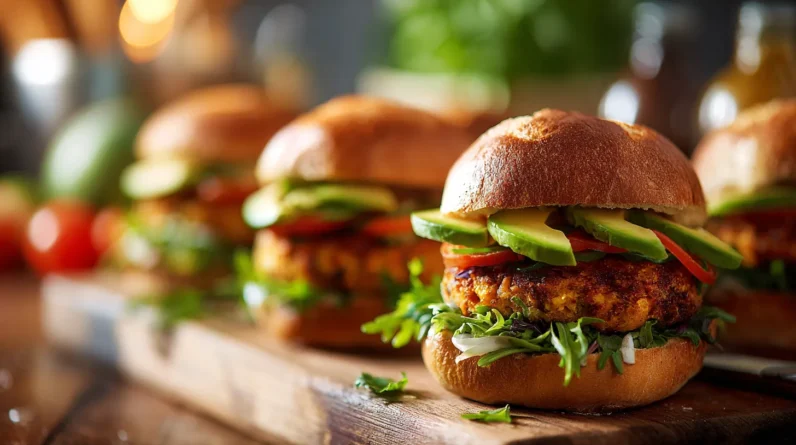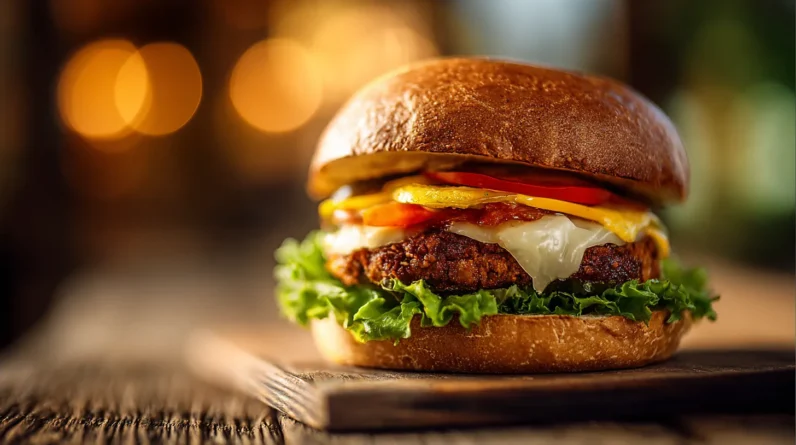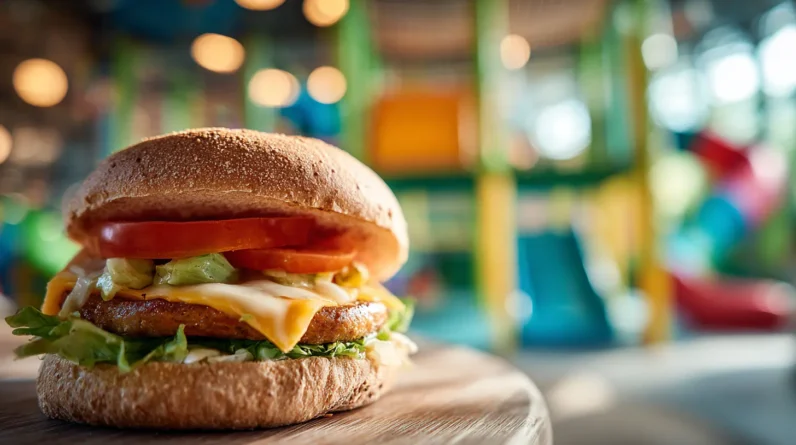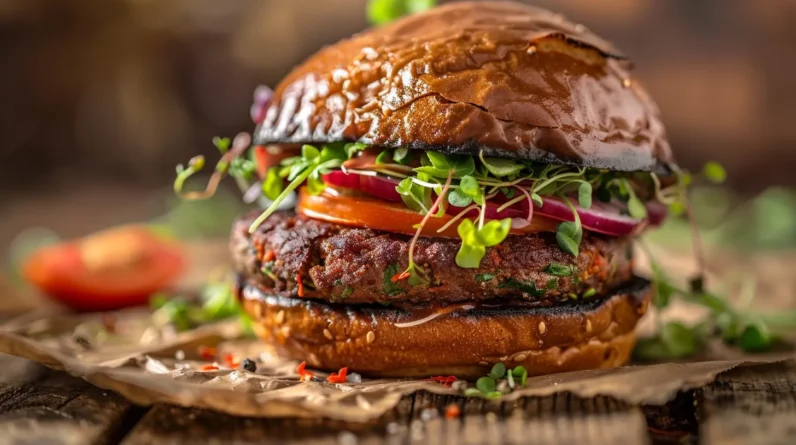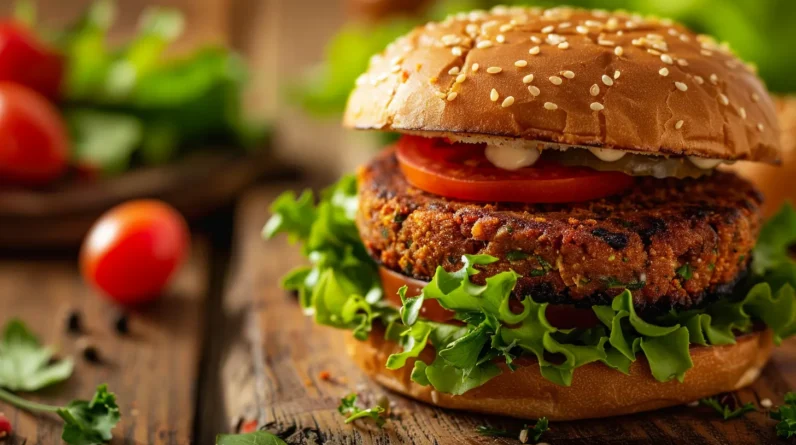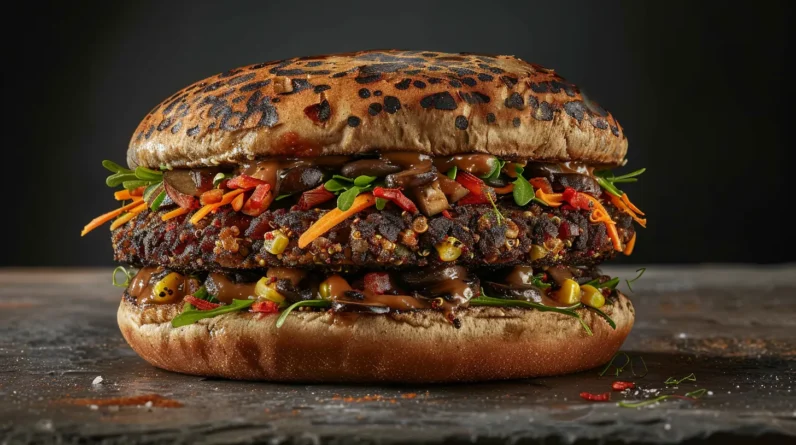
Modern veggie burgers balance three key elements: protein content, texture, and flavor complexity. We’ve found that combining legumes (15-20g protein per cup) with TVP creates a robust protein foundation, while strategic mixing techniques and hydrocolloids at 0.5-1% concentration guarantee ideal texture. For binding, we recommend natural agents like ground psyllium husk or flax seeds, which form gel-like matrices. Flavor enhancement comes from umami-rich ingredients such as nutritional yeast, tamari, and mushroom powder. Whether choosing store-bought convenience or homemade control, understanding these components reveals the potential for creating satisfying plant-based patties.
Plant-Based Protein Sources
Plant-based proteins serve as the foundation for creating satisfying veggie burger patties that rival traditional meat options. We’ll explore key protein sources that deliver both nutritional value and structural integrity to our patties. Legumes, particularly chickpeas, black beans, and lentils, offer 15-20 grams of protein per cup while providing essential binding properties.
Textured vegetable protein (TVP) and crucial wheat gluten contribute concentrated protein content, with TVP delivering up to 50 grams of protein per 100 grams. We can also incorporate quinoa and tempeh, which bring complete amino acid profiles to our burgers. When combining these proteins, we achieve ideal amino acid balance while maintaining proper moisture content. Strategic protein selection guarantees our patties maintain structural integrity during cooking while delivering satisfying nutritional density.
Texture Enhancement Techniques
Building upon our protein foundation, achieving the ideal texture in veggie burgers requires specific mechanical and chemical manipulation techniques. We’ll employ multiple processing methods to replicate meat’s fibrous structure and mouthfeel.
First, we’ll utilize high-shear mixing to create protein alignment, followed by precise temperature-controlled binding. We can enhance structural integrity through hydrocolloid incorporation, using methylcellulose or xanthan gum at 0.5-1% concentration. For peak moisture retention, we’ll implement a two-stage cooking process.
Additional texture improvements come from strategic particle size manipulation. We’ll combine coarse-ground ingredients (2-3mm) with fine particles (0.5mm) to mimic meat’s varied texture profile. Through controlled freezing cycles, we can create ice crystal formations that generate small air pockets, contributing to a tender yet cohesive final product.
Popular Binding Ingredients
Successful veggie burger formulation relies heavily on effective binding agents that provide structural cohesion and ideal texture. We’ve found that flax and chia seeds, when combined with water, create a gel-like matrix that’s particularly effective at holding ingredients together. Ground psyllium husk offers superior binding properties through its high soluble fiber content.
Traditional binders like chickpea flour and essential wheat gluten deliver excellent protein-based structure, though we must consider gluten sensitivities when using the latter. For starch-based options, we rely on arrowroot powder and methylcellulose, which enhance binding at specific temperature ranges. Mashed potatoes and cooked quinoa serve dual purposes as both binders and bulk ingredients. When selecting binders, we’ll need to balance their functional properties with their impact on flavor, nutritional profile, and moisture retention.
Flavor-Boosting Components
How do we optimize the savory depth of veggie burgers? We’ll need to incorporate key umami-rich ingredients that enhance the meat-like satisfaction. Nutritional yeast provides essential B vitamins while contributing a nutty, cheese-like flavor. We combine this with tamari or coconut aminos to add that vital umami foundation.
Caramelized onions and roasted garlic intensify the flavor profile through their natural sugars and sulfur compounds. We’ll also integrate mushroom powder or dried porcini, which contain natural glutamates that amplify savory notes. For deeper complexity, we include smoked paprika, cumin, and a touch of liquid smoke. Miso paste serves dual purposes – binding and umami enhancement. Fresh herbs like thyme and sage contribute aromatic compounds that perfectly complement the earthy base notes.
Store-Bought Versus Homemade Options
While mastering flavor-rich ingredients empowers us to create custom veggie burgers, the choice between store-bought and homemade options presents distinct advantages. Store-bought varieties offer consistency, convenience, and extended shelf life through commercial processing techniques. They’re often fortified with essential nutrients and undergo rigorous testing for ideal texture and binding.
Homemade versions allow us to control ingredient quality, sodium content, and allergen exposure. We’ll achieve cost savings through bulk ingredient purchasing and can adjust protein ratios by incorporating varied legumes, grains, and vegetables. The trade-off lies in preparation time and the need to master binding techniques. We’ve found that homemade patties typically require 30-45 minutes of prep time, plus cooking, while store-bought options offer immediate preparation with predictable results.
Conclusion
Examining the landscape of veggie burger options reveals clear pathways to optimize these meat alternatives. We’ve analyzed protein content, binding mechanisms, and textural elements that contribute to a satisfying plant-based patty. But what’s the true measure of success? Our research demonstrates that balancing nutritional density with sensory appeal remains essential. Through precise ingredient selection and proven preparation techniques, we’re now equipped to create or select veggie burgers that meet both dietary and culinary standards.


